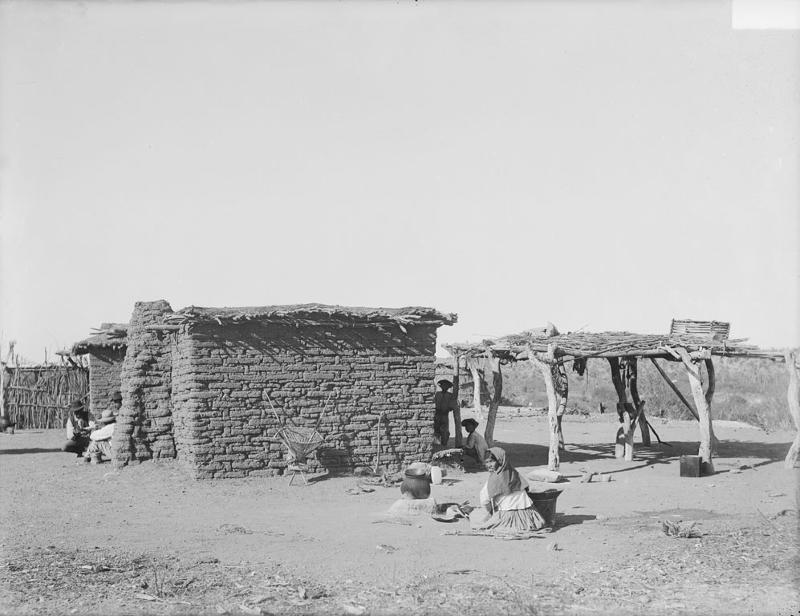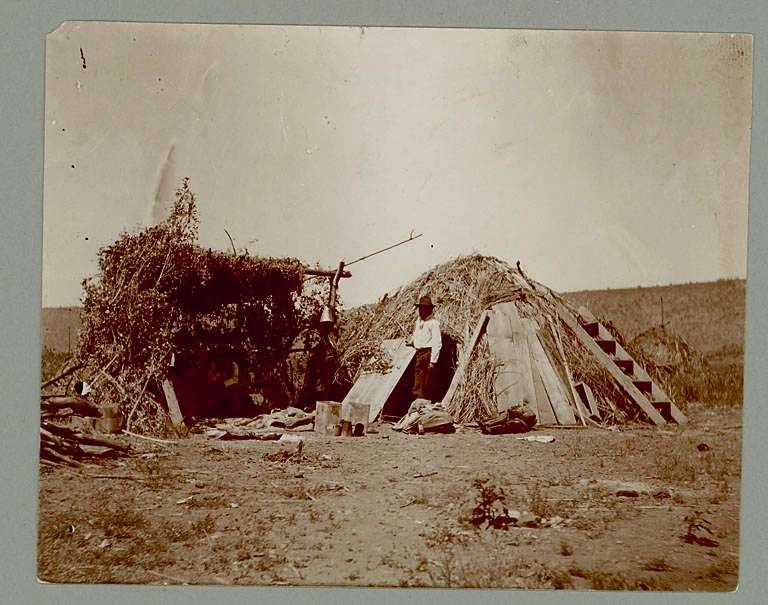Overview
|
Jemez Pueblo, New Mexico. 1889
|
For the purposes of this course, the American Southwest includes all of Arizona and New Mexico, the southernmost portions of Utah and Colorado, the southeastern portion of Nevada, and the northwestern Mexico. At contact, three major types of economic adaptations were practiced by the Native American groups that lived here. These were village farming, rancheria farming, and foraging and farming.
Village farmers lived in large, compact villages that housed several hundred people and practiced intensive agriculture. Village farmers were exclusively Puebloan groups who lived along the Rio Grande and its tributaries and on the Colorado Plateau.
|
|
Tohono O'odham rancheria settlement, 1894 Source: SRIS - BAE GN 02785E 06425800, National Anthropological Archives, Smithsonian Institution, Dinwiddie, William
|
Rancheria farmers also were intensive agriculturalists, but rather than living in compact villages their communities consisted of dispersed farmsteads separated from one another by distances of as much as half a mile. The O'odham (also known as the Pimans and Papagos), the River Yumans, and the Yaqui were all rancheria farmers.
|
|
Apache wickiup. 1901. Because forager-farmers did not live in one location for very long, their structures tended to be made of temporary materials. Source: SPC Sw Apache No # Habitations 02082900, National Anthropological Archives, Smithsonian Institution |
Forager-farmers were people that lived primarily off of wild resources, but who supplemented these foods with limited amounts of cultivated products. Because farming was only a supplement to hunting and collecting, farmer-foragers tended to be highly mobile, moving around from location to location throughout the year. In the American Southwest, the Upland Yumans, Navajo, Apaches, and Southern Paiutes were all farmer-foragers.
Forager-farmers were people that lived primarily off of wild resources, but who supplemented these foods with limited amounts of cultivated products. Because farming was only a supplement to hunting and collecting, forager-farmers tended to be highly mobile, moving around from location to location throughout the year. In the American Southwest, the Upland Yumans, Navajo, Apaches, and Southern Paiutes were all forager-farmers.
|
Click next page to continue.



